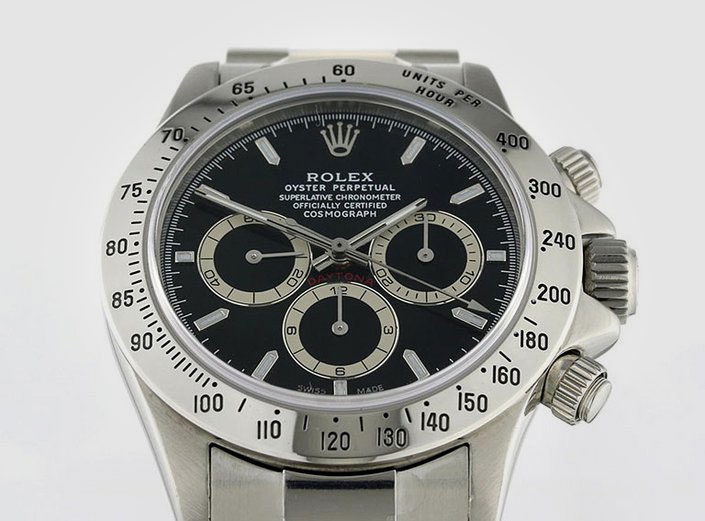
It is no exaggeration to say that the Rolex Daytona is one of the most sought-after watch models in the world. Constant non-availability at almost all Rolex dealers and waiting lists with sometimes years of waiting until the good piece is finally in your own hands, reveals the unusual fascination of the Rolex Daytona for many watch lovers.
At the beginnning though, as with so many cult watches today, it was granted a rather modest success.
The beginnings: The 60s to 80s
Flashback: In 1962, Rolex became the official timekeeper of the world-famous car race at Daytona International Speedway in Florida. In 1963, the previously unnamed Rolex chronograph appeared under the name "Daytona" (Ref. 6239) to communicate the connection between Rolex and motor racing.
Hollywood star Paul Newman, who drove car races himself, was often spotted wearing a Rolex Daytona. And that, even though he wasn't actually an official Rolex ambassador. Newman wore a special version of the dial, henceforth known as the "Newman Daytona". Today, these models achieve absolutely top prices.
In 1965, Rolex launched the improved model 6240 with screw-down pushers and a black acrylic bezel. The size remained at a modest 37 mm in diameter.
It is noteworthy that the Daytonas were equipped with the Valjoux 72 manual winding movement, which for example was also used in the Breitling Navitimer 806-72. The reason is simple: there was no Rolex chronograph movement of its own and at that time the origin of the movement was of secondary importance.
Even more important is the fact that the first automatic watches with a chronograph function from Heuer, Breitling and Zenith were brought onto the market at the end of the 1960s. With its conventional hand-wound movements, Rolex was overshadowed by these innovations. The sales success of the Rolex Daytona was correspondingly slow in the 1970s and 1980s. Of course, the quartz crisis in the Swiss watch industry at this time also played a major role in the sales difficulties.
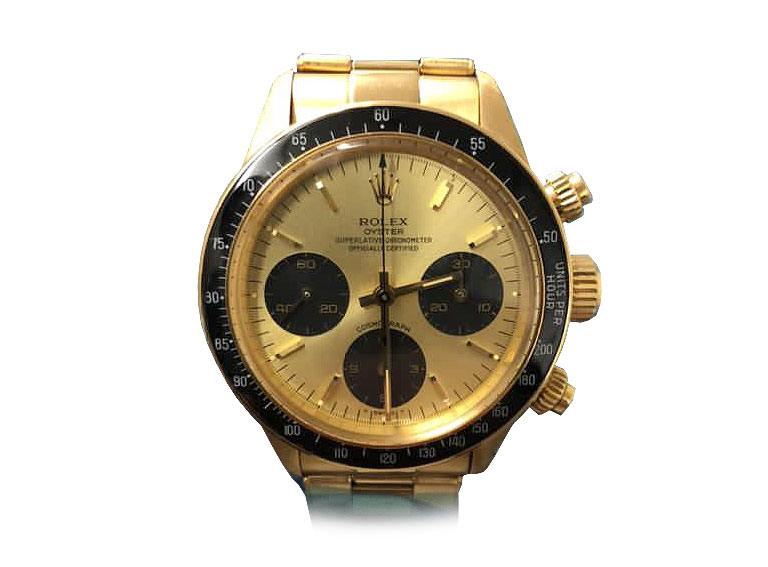
A full gold hand-wound Daytona reference 6263 from the 1980s. The screw-down chronograph pushers, which are one of the defining stylistic features of the Rolex Daytona and are still in use today, are clearly visible. The early Daytona models were still produced without screwed pushers.
The design revolution: Rolex Daytona Ref. 16520
In 1988, with the reference 16520, the Rolex Daytona was given a massive design revision, including a new dial design, a new bezel design and a case that was enlarged to 40 mm. The movement was also changed. The Dayotna finally had an automatic movement. But again it was "only" a third-party movement modified by Rolex and not a genuine Rolex manufacture movement that was used: the famous "El Primero" movement from Zenith. ("El Primero" by the way, because Zenith was the first watch brand to bring a chronograph movement with automatic winding onto the market in 1969 - just "El Primero", which means "the first" in Spanish.)
The new design was a big hit and gave the Daytona this very special and characteristic look, which is still absolutely timeless today. The reference 16520 was built unchanged until the year 2000, apart from a few minor changes to the details of the dial and the bezel (which today can cause very large price differences).
The so-called "Patrizzi-Dials" deserve special mention. These are 16520 models from the years 1993 to 1995, the dials of which the light chronograph borders have turned brown over time.
Other dial variants that are very popular today and are accordingly expensive are the so-called "floating dials" (the word "Daytona" has a larger space to the text in front of it) and dials with "inverted 6" on the chronograph hour counter. (Strictly following the system of the arrangement of the digits on the auxiliary dial, the digit "6" was turned upside down at 6 o'clock and represented as a "9". Visually, of course, it looks like an error. This was changed in later variants.)
There are also minor differences in the bezel, which can make a huge difference in price. For example, the bezels on the very early 16520 models also had a "50" and "55" marking. The later bezels, on the other hand, only start their scale at "60".

Rolex Daytona 16520 with Zenith movement from 1997. The reference 16520 brought the striking design change of the Daytona models, which with small adaptations has been continued almost unchanged to this day.
Start into the new millennium: The Rolex Daytona Ref. 116520
It was not until 2000 that Rolex finally granted the Daytona a genuine Rolex manufacture chronograph movement (4130). As a rusult of the factory switch, the Daytona also received some minor design updates (especially on the dial) and the new reference number 116520.
On the whole, however, the design of the watch remained unchanged, which is not surprising in view of the Daytona's phenomenal success.
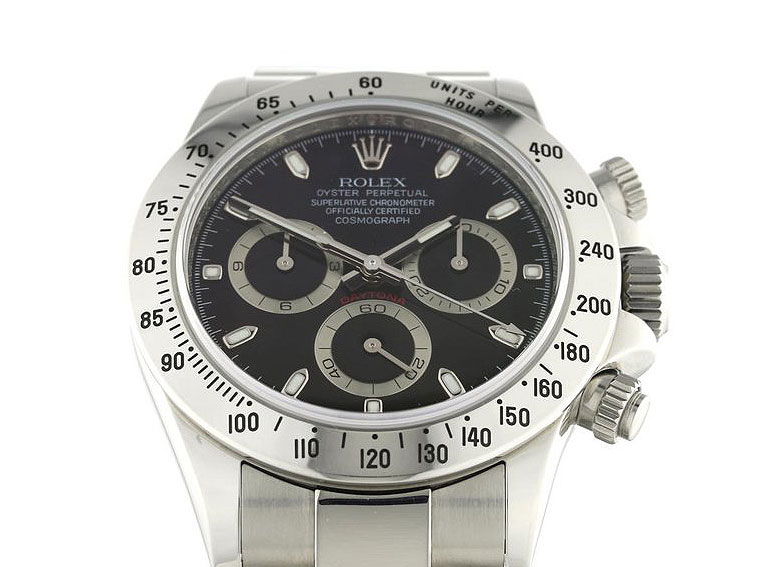
Rolex Daytona 116520 with Rolex manufacture movement dated 2008.
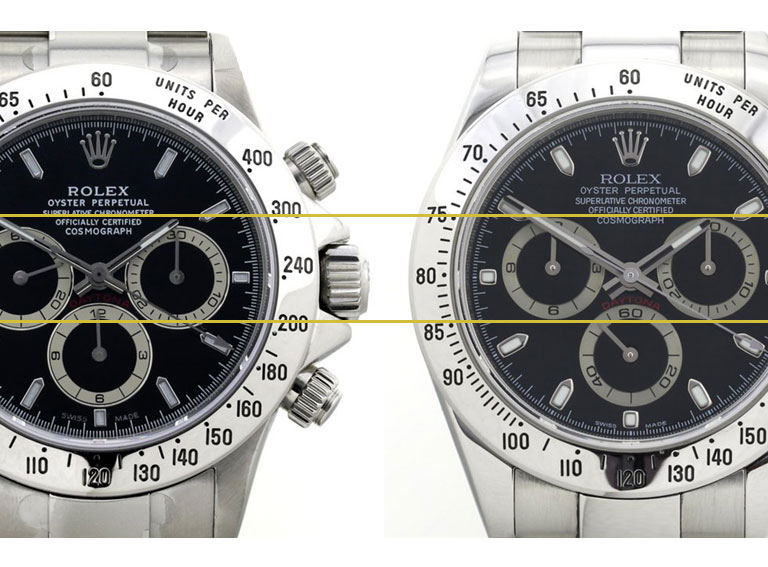
On the left a Rolex Daytona with a Zenith movement from 1997 and on the right a Rolex Daytona with a Rolex manufacture movement from 2008. Although the watches appear almost identical, there are minor differences:
Most striking is the position of the two upper sub-dials on the dial. While these are classically arranged vertically in the middle of the dial on the Zenith model, they are slightly offset upwards on the Daytona with Rolex manufacture movement.
The indeces and hands of the Rolex with manufacture movement are also slightly thicker than those of the Rolex with Zenith movement.
The third difference is in regard to the functions on the sub-dials: On the Zenith-Daytona (Ref. 16520), the hour counter is located on the lower sub-dial, as on most chronographs, and the seconds counter on the upper left sub-dial. With the reference 116520, however, this arrangement is exactly the opposite.
2016 – anoter evolutionary step: The Rolex Daytona Ref. 116500
At the "Baselworld" Watch Fair in 2016, Rolex presented the next evolutionary stage of the successful model with the reference 116500. The new Daytonas distiguish themselve through a black ceramic bezel, which is used instead of the steel bezel of the 116520. The design of the dial was also very carefully and slightly adapted. Apart from that, the current Rolex Daytona models look (almost) like their ancestors from 1988, which underlines the timeless sportiness and elegance of the design.
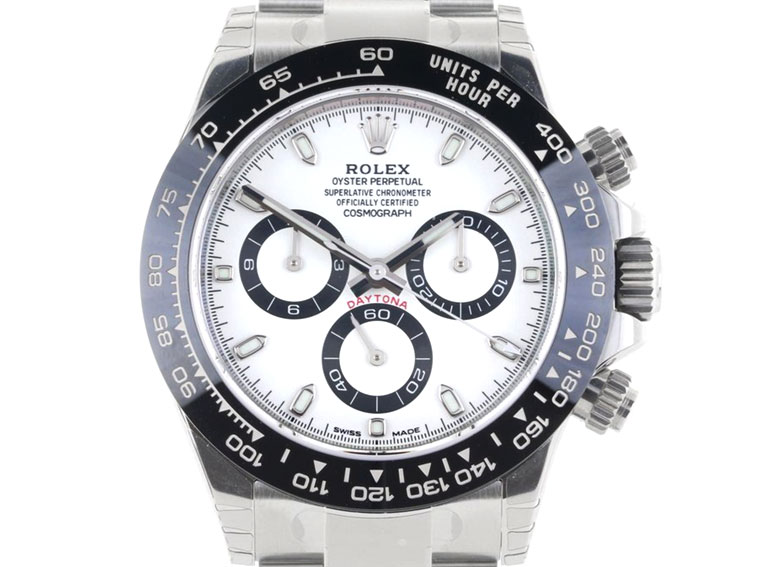
The current model of the Rolex Daytona with reference number 116500 shows the well-known Daytona design, but now with a black ceramic bezel.
Collectible value as at the end of 2020
The Daytona is undoubtedly one of the most sought-after watches in the world. At the same time, it is almost impossible to get from official Rolex dealers because Rolex only delivers a few models that are always out of stock and are almost always only sold to regular customers of the Rolex licensees. This fact is also reflected in the price on the free market for the current and older references of the Daytona, which has only known one direction for years: steeply uphill and well above the official sales prices. Incidentally, this applies primarily to the steel models. The bi-color references in particular have a significantly lower price in comparison and are therefore considered good entry-level models into the world of Daytona.
In particular, the unsuccessful models from the 1970s and 1980s have become almost unaffordable today. The price for the Daytona original reference 6239 usually starts at around 40.000 EUR with a wide upwards price range. Daytonas of this period with Paul Newman dials have now broken the 100.000 EUR level several times. But be careful! There are a lot of questionable models on the market and especially with vintage Daytonas the utmost caution is to be taken. This starts with fake movements (the Valjoux 72 used is still easy to get today) and ends with fake dials.
But the successor models 16520 and 116520 have also seen rapid price increases in recent years. Models of the Rolex Daytona 16520 start at around 20.000 EUR and a Ref. 116520 usually costs at least 16.000 EUR. The same applies to the current Daytona models with the reference 116500. These are also usually only available on the secondary market at prices that are well above the regular retail price.
The quoted prices apply to watches without papers. For full sets with a Rolex guarantee certificate, massive surcharges are sometimes required. And astronomical sums are paid for copies that were previously owned by celebrities. The Rolex Daytona (with a white panda Newman dial and steel bezel) was auctioned by Paul Newman in October 2017 for an incredible 15,75 million Dollars. This made it the most expensive wristwatch ever sold at the time.
There are no signs that this price trend will change in the future. Thus, the Rolex Daytona is an excellent investment with a spectacular return, and is also an absolute design icon.
You will find several different models of the Rolex Daytona at Bargello, which can be purchased from us completely risk-free with a 2-year Bargello guarantee and 100% reliable advice:
Wassergasse 7
2500 Baden bei Wien
MON-WED, FRI: 9.30am-1pm & 2.30pm-6pm
THU: 9.30am-12pm
Tel.: (+43) 22 52 20 90 82
mail: robert(at)bargello.at